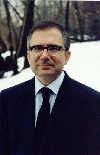Schlitz herself has been a very successful subject in psi experiments, and she is known in the field as a psi conducive experimenter. She conducted a major study with skeptic Richard Wiseman. Together they tested people to see if they could psychically sense whether someone was staring at them. Both used the same laboratory and same procedures. She obtained statistically significant results; he did not (Wiseman & Schlitz, 1997).
During her career, Schlitz has collaborated with many major figures in the field, including Robert L. Morris, K. Ramakrishna Rao, Elmar Gruber, J. E. Kennedy, Charles Tart, Debra Weiner, Ralph Locke, William Braud, Helmut Schmidt, Gary Heseltine, Charles Honorton, Edwin May, Elizabeth Targ, Dean Radin, Nancy Zingrone, and Richard Wiseman.
In year 2000, Schlitz served as president of the Parapsychological Association (PA), the professional association of parapsychologists. In her presidential address that year, she stated:
“Today I direct the research program at the Institute of Noetic Sciences. We have about 40 projects on various aspects of consciousness. A number of them fall into the area of parapsychology, although I almost never use that word” (emphasis added, 2001, p. 342).This statement was made directly to the Parapsychological Association. It was published in the Journal of Parapsychology. It is an astounding declaration. For a president of any professional organization to openly admit, in a presidential address, that she avoids being identified with the name demonstrates the disrepute, even shame, of parapsychology.
But Schlitz was not alone in her views. In fact, she echoed earlier statements made by another former PA president, Ian Stevenson.
Stevenson (1918-2007) was chairman of the Department of Psychiatry at the University of Virginia medical school. He gave up his chairmanship and founded what is now the longest-running university-affiliated parapsychology research unit in the United States. His work focused primarily on reincarnation and other topics related to the issue of survival of bodily death.
In 1988 he published a guest editorial in the Journal of the American Society for Psychical Research asking: “Was the Attempt to Identify Parapsychology as a Separate Field of Science Misguided?” In that piece he stated:
“the words parapsychology and parapsychologist have gradually acquired negative connotations that are now proving gravely disadvantageous” (p. 310)Stevenson described, in detail, the isolation and marginality of professional parapsychology. He discussed the same themes in a 1984 editorial titled: “Are Parapsychology Journals Good for Parapsychology?”
“the word parapsychology, originally intended to earn respect, now often evokes dismay and derision” (p. 311)
About 20 years ago he changed the name of his research unit from the Division of Parapsychology to the Division of Personality Studies. He hoped to avoid the stigma associated with the name. (The unit is now called the Division of Perceptual Studies.)
Schlitz and Stevenson devoted the bulk of their careers to parapsychology. They are highly respected within the field, but their observations on the field’s marginality were not altogether warmly received. But given their professional statuses, their observations are important.
Because of their social and career positions, Schlitz and Stevenson were required to be attuned to the views of academic and cultural elites. People familiar with Schlitz likely know of her social skills, which have served her well in her career. Stevenson, as a department chairman for 10 years, was undoubtedly adept at effectively dealing with people in positions of power.
The two recognized the marginality of parapsychology, especially within status-conscious, bureaucratic institutions, such as academe. But apparently neither understood that psychic phenomena themselves are inherently liminal, and thus marginal.
Let us remember that there has been a substantial effort to remedy the situation. The Society for Psychical Research has been in existence for 125 years, the Journal of Parapsychology for 70. The Parapsychological Association celebrated its 50th anniversary this year. Yet leaders who have devoted the bulk of their professional lives to psi research, and who held relatively secure positions, still felt some embarrassment about being associated with the term parapsychology.
The fact is, the field is consistently marginalized, and frequently attacked. But the antagonism is not simply normal “opposition to new ideas.” After all, the phenomena are not new—they’ve been known for thousands of years. But the phenomena are liminal, and until researchers understand that fact, and the implications, they will continue to be puzzled by the low status of parapsychology.
References
Schlitz, Marilyn. (2001). Boundless Mind: Coming of Age in Parapsychology [Parapsychological Association presidential address for year 2000]. Journal of Parapsychology, Vol. 65, No. 4, pp. 335-350.
Stevenson, Ian. (1984). Guest Editorial: Are Parapsychology Journals Good for Parapsychology? Journal of the American Society for Psychical Research, Vol. 78, No. 2, pp. 97-104.
Stevenson, Ian. (1988). Guest Editorial: Was the Attempt to Identify Parapsychology as a Separate Field of Science Misguided? Journal of the American Society for Psychical Research, Vol. 82, No. 4, pp. 309-317.
Wiseman, Richard & Schlitz, Marilyn. (1997). Experimenter Effects and the Remote Detection of Staring. Journal of Parapsychology, Vol. 61, No. 3, pp. 197-207.
- - - - - - - - - - - -
Web sources of possible interest:
http://www.marilynschlitz.com/
Obituary of Ian Stevenson by Emily Williams Kelly at:
http://www.healthsystem.virginia.edu/internet/personalitystudies/publicationslinks/Stevenson-s-Obit-Emily.pdf
Stevenson, Ian. (2006). Half a Career With the Paranormal. Journal of Scientific Exploration, Vol. 20, No. 1, pp. 13-21. Available at: http://www.healthsystem.virginia.edu/internet/personalitystudies/Stevenson.pdf

No comments:
Post a Comment